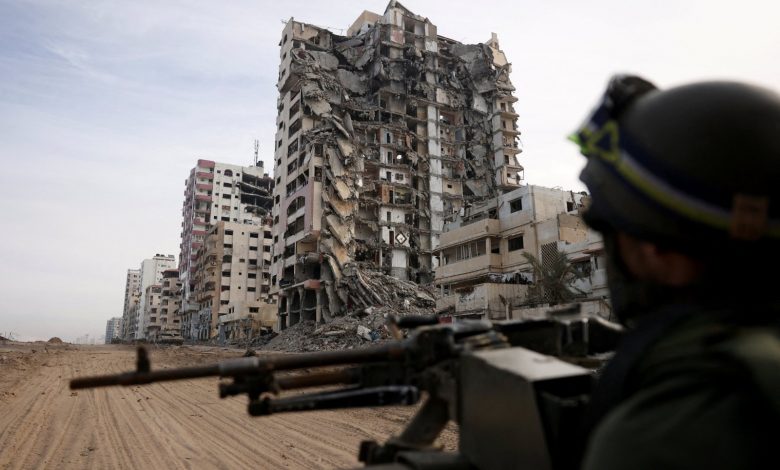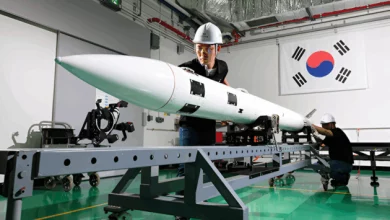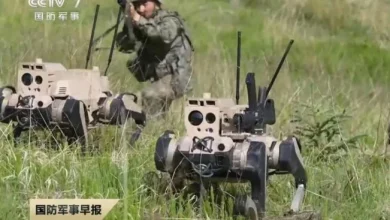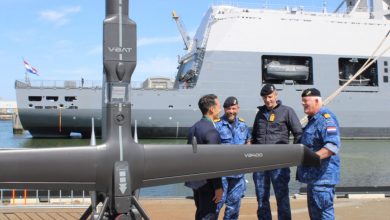Analysis: Will a ceasefire in Gaza lead to a solution?

It seems unlikely that Israel and Hamas can be convinced to transition to a full cease-fire or peace agreement following the Qatar-brokered truce. Yet the humanitarian pause will be a temporary relief for the Palestinian people trapped in Gaza.
In a new development and the most significant diplomatic breakthrough since Oct. 7, Israel and Hamas announced a truce-for-hostage deal early Wednesday. A four-day pause in fighting and the entry of trucks loaded with humanitarian aid will constitute a breathing space for thousands of Gazans trapped in the Strip. However, we should not be too optimistic.
Under the Qatar-brokered agreement, 50 Israelis held by Hamas will be released in exchange for 150 Palestinian detainees in Israeli jails, it was reported. The release of every additional 10 hostages would result in one additional day in the pause, Israel said. Although it was stated that the deal of truce could be stretched out, which might be interpreted as a potential to reach a road to peace, one should be cautious as Israel sitting at a table for peace negotiations with Hamas following a cease-fire seems unrealistic in the current state of affairs.
As an arrangement in which parties accept to commit to the cessation of violence, truces are a widely seen phenomenon in ending civil wars and establishing peace. Between 1989 and 2020, more than 2,000 cease-fires were declared globally, according to the Civil Conflict Cease-fire Dataset. Yet it is to be underlined that cease-fires do not necessarily translate into peace.
Many countries have raised their hopes that the current deal could be a basis for a broader settlement of the problem. Türkiye on Wednesday said that it hoped the “humanitarian pause will help permanently end the current conflict as soon as possible and initiate a process toward a just and lasting peace based on a two-state solution.” Qatar similarly voiced hope that the humanitarian pause deal in the Gaza Strip will lead to serious peace talks. At the same time, Palestinian President Mahmoud Abbas renewed his call for a comprehensive cessation of the Israeli aggression against the Palestinian people and the implementation of a political solution leading to an end to the occupation. French President Emmanuel Macron said it should be “broadened” and the “humanitarian pause” it brings used to work toward a “lasting cease-fire.”
Violence generally erupts after the declaration of cease-fires. It is often seen that the parties engage in attacks in the first days. Provocations are also common. One of the main reasons why violence reoccurs is that the cease-fire does not solve the underlying problems of the conflict, namely Israel’s claim for territories and Palestinian’s desire for a state. Moreover, apart from the actively warring parties, in this case, Hamas and Israel, third parties may also have an interest in sabotaging the process. Iran’s anti-Israel clients in the region bear such an interest.
In recent weeks, the Iran-backed Houthi rebels in Yemen have repeatedly fired drones and missiles from the south of the Arabian Peninsula toward Israel. Fighting has also taken place along the Israel-Lebanon border with Hezbollah, which is similarly backed by Iran, raising fears the Gaza war might fuel a regionwide conflagration.
Cease-fire monitors or an information exchange mechanism for healthy communication might be useful in preventing such kinds of sabotages, misunderstandings and misinformation that could lead to escalation and build some initial trust.
Cease-fires have also what scholars call a “dark side.” However, stopping killing during the agreed period may lead to more deaths in the future as this time-space may be used by the parties to regroup, rearm or consolidate territorial control over an area. This might lead to the prolonging of the war in general. Such truces take place when both parties see an interest in halting fighting. Or, more rarely, when a strong power presses for one, which could only be the U.S. in the case of the Israel-Palestine conflict.
Prime Minister Benjamin Netanyahu had long rejected a cease-fire. Domestic pressure to bring the Israeli hostages in Hamas’ hands home and keeping international support have been two of the reasons why he acquiesced to one; other motives may also have contributed to it. Meanwhile, Israel’s far-right Security Minister Itamar Ben-Gvir has sharply criticized the truce agreement. Sometimes, parties believe they have more to gain from the continuation of fighting instead of cease-fires.
Already, Netanyahu said Israel would resume the war after the truce and keep fighting “until we achieve all our goals,” including the defeat of Hamas. And just ahead of the truce, the Israel Defense Forces (IDF) intensified its operations and advanced. Israeli troops and tanks are expected to remain in place despite the risks of being stationary behind enemy lines.
On the positive side, some of the hostages will return to their families, while 300 trucks of aid and fuel will be allowed to reach Gazan civilians who are in desperate need of it. The number, however, is far below what is needed for the people and whether the deal will allow health personnel to enter the area is a question.
Hamas can drag things out with additional hostage releases. Soldiers will likely be the last to be freed, a significant negotiation card in the group’s sleeve.
It remains to be seen whether this prolonged truce will be used by international actors to reach a permanent settlement. Being a conflict dating back decades and with Israel having the upper hand on the current map, convincing it to return to the 1967 borders is a huge task.





